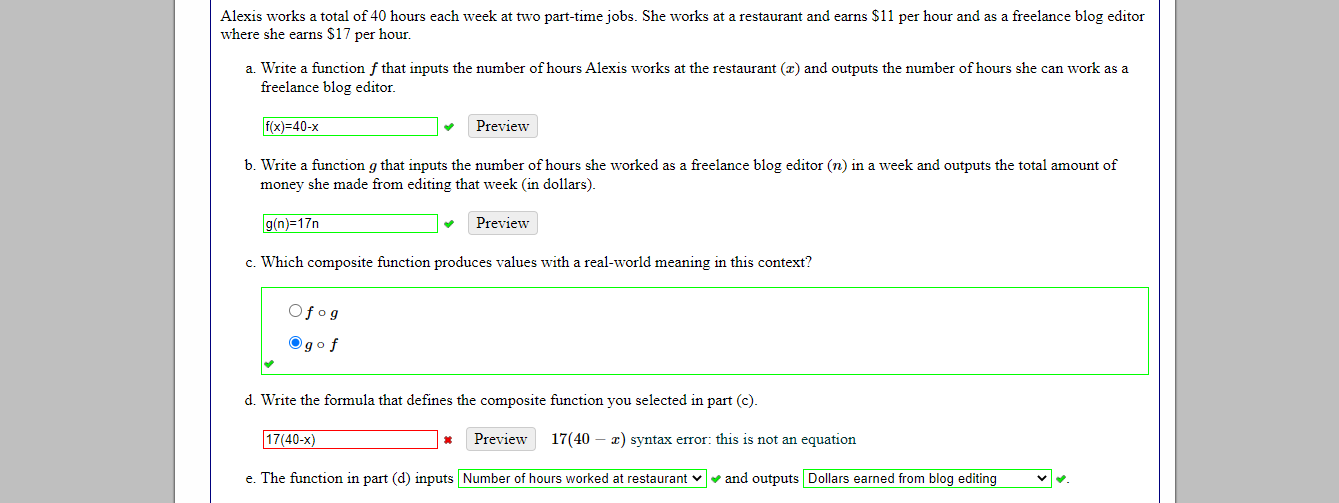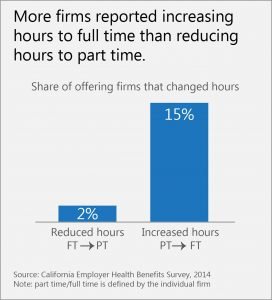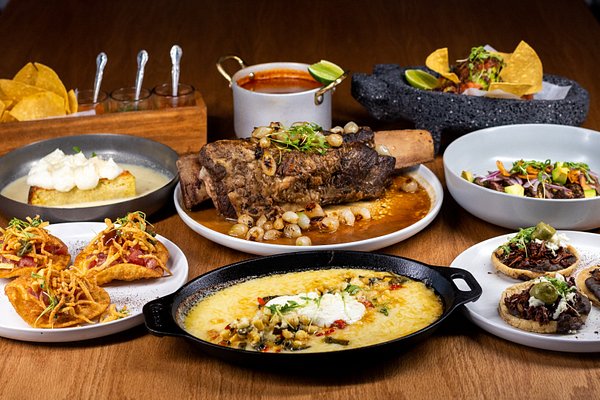How Many Hours Full Time Restaurant Employees Work?
A full-time restaurant job typically requires 35 to 40 hours per week. This can vary based on the restaurant’s needs.
Working in a restaurant full-time demands dedication and stamina. Employees often work long hours, including evenings, weekends, and holidays. A typical workweek consists of 35 to 40 hours, but these hours can fluctuate based on the restaurant’s requirements and busy periods.
Restaurant staff must be adaptable and ready to handle shifts that can extend beyond the standard workweek. This environment is fast-paced and physically demanding, requiring excellent customer service skills and teamwork. Understanding the hours involved is crucial for anyone considering a full-time role in the restaurant industry. This commitment ensures the smooth operation and success of the establishment.
Typical Full-time Hours
Working full-time in a restaurant can be demanding but rewarding. The hours can vary based on the restaurant’s needs and your role. Understanding typical full-time hours helps you manage expectations and plan your schedule effectively.
Standard Weekly Schedule
Most full-time restaurant employees work around 40 hours per week. This often translates to five 8-hour shifts. The shifts can be spread across weekdays and weekends. Restaurants usually operate in shifts, covering breakfast, lunch, and dinner hours.
- Breakfast Shift: 6 AM – 2 PM
- Lunch Shift: 11 AM – 7 PM
- Dinner Shift: 4 PM – 12 AM
Employees may have different start and end times based on peak hours. Flexibility is essential for handling busy periods and covering for colleagues.
Variations By Role
Full-time hours can differ based on your role in the restaurant. Here’s a breakdown:
| Role | Typical Hours |
|---|---|
| Chef | 50-60 hours per week |
| Server | 35-45 hours per week |
| Manager | 45-55 hours per week |
| Dishwasher | 30-40 hours per week |
Chefs often work longer hours to prep and manage the kitchen. Managers oversee operations and may work extra hours during busy times. Servers and dishwashers may have slightly fewer hours, but their schedules can be flexible based on customer flow.

Impact Of Restaurant Type
The type of restaurant impacts the full-time working hours. Different restaurant types have varying demands. These demands influence the working hours for staff.
Fast Food Vs. Fine Dining
Fast food restaurants usually have longer operational hours. They often open early and close late. Staff in fast food restaurants may work in shifts. This helps cover the long hours. Fast food places require quick service. Staff must work efficiently and quickly.
Fine dining restaurants have shorter operational hours. They often open for lunch and dinner only. Staff in fine dining restaurants may work fewer hours. The work is more detailed and service-oriented. Fine dining requires attention to detail and high-quality service.
Chain Vs. Independent
Chain restaurants often have standardized operations. They follow set procedures and schedules. Staff in chain restaurants may have more predictable hours. Chains can afford to hire more staff. This helps manage the workload efficiently.
Independent restaurants may have more flexible hours. They are often owner-operated. Staff may work longer hours to cover all tasks. Independent restaurants may have fewer staff. This can lead to longer hours for each employee.
| Restaurant Type | Typical Hours | Staff Schedule |
|---|---|---|
| Fast Food | Early to Late | Shift-based |
| Fine Dining | Lunch and Dinner | Fewer hours, detailed service |
| Chain | Standardized | Predictable |
| Independent | Flexible | Longer hours |
Seasonal Variations
Running a full-time restaurant means adapting to different seasonal changes. The number of hours worked can vary greatly. Let’s explore how seasonal variations impact restaurant operations.
Holiday Rush
The holiday season is the busiest time for many restaurants. During holidays, restaurants see a significant increase in customers. More staff is needed to handle the rush. Extended hours become necessary to meet the demand.
- More reservations and walk-ins
- Extended operating hours
- Increased staff schedules
Restaurants must prepare for these busy times. Planning ahead ensures smooth operations. Proper staffing is crucial to manage the holiday rush.
Off-peak Periods
Off-peak periods are quieter times for restaurants. These are times when fewer customers visit. During these periods, the number of working hours may reduce.
- Fewer customers
- Reduced staff schedules
- Shorter operating hours
Restaurants can use off-peak times to focus on other tasks. Staff training and maintenance work are ideal during these periods. Off-peak times help in balancing the busy seasons.
| Season | Customer Volume | Operating Hours |
|---|---|---|
| Holiday Season | High | Extended |
| Off-Peak Season | Low | Reduced |
Overtime And Extra Shifts
Working in a full-time restaurant often means more than just standard hours. Overtime and extra shifts are common in the industry. Let’s explore what this entails.
Common Overtime Hours
Many restaurant workers find themselves working beyond the typical 40-hour workweek. Overtime often occurs during busy periods, such as weekends and holidays. Here’s a breakdown of common overtime hours:
- Weekends: Restaurants are busiest on weekends.
- Holidays: Special occasions increase dining out.
- Events: Catering events can extend shifts.
Employees may work an extra 5 to 10 hours weekly during these times. This can result in up to 50 hours per week or more.
Voluntary Vs. Mandatory
Overtime can be either voluntary or mandatory. Understanding the difference is crucial:
| Type | Description |
|---|---|
| Voluntary | Employees choose to take on extra shifts. |
| Mandatory | Employers require employees to work extra hours. |
Voluntary overtime offers flexibility and extra income. Mandatory overtime can be stressful and tiring.
Work-life Balance
Balancing work and personal life is crucial in the restaurant industry. Full-time employees often face long hours, making it challenging to maintain a healthy balance. This section delves into achieving a harmonious work-life balance in a full-time restaurant role.
Employee Well-being
Employee well-being is a priority for any successful restaurant. Happy staff work better, leading to improved customer experiences. There are several ways to enhance well-being:
- Offer flexible schedules
- Provide health benefits
- Encourage regular breaks
- Promote a positive work environment
Managing Long Hours
Managing long hours is essential for maintaining energy and motivation. Here are some strategies to handle extended shifts effectively:
- Plan and prioritize tasks
- Take short, frequent breaks
- Stay hydrated and eat healthily
- Communicate openly with managers
| Strategy | Benefits |
|---|---|
| Flexible schedules | Reduces stress and burnout |
| Health benefits | Improves overall well-being |
| Regular breaks | Keeps energy levels high |
Legal Regulations
Understanding legal regulations for full-time restaurant workers is vital. These regulations protect both employees and employers. This section explains the key areas of labor laws and employer responsibilities.
Labor Laws
Labor laws define the working hours for full-time employees. In most regions, full-time status is 40 hours per week. Laws can vary based on location and industry. It’s crucial to know your local labor laws.
- Overtime Pay: Employees often earn extra for overtime.
- Breaks: Workers must get meal and rest breaks.
- Minimum Wage: There is a set minimum pay per hour.
Employer Responsibilities
Employers have many duties to ensure a fair workplace. They must follow labor laws and provide a safe environment.
| Responsibility | Description |
|---|---|
| Scheduling | Plan shifts to comply with legal hours. |
| Training | Offer proper training to all staff. |
| Record-Keeping | Maintain accurate work hour records. |
Employers must also provide a safe working environment. This means following health and safety regulations. Proper hygiene in the restaurant is essential. Safe food handling practices must be in place.
Effect On Job Satisfaction
The number of hours full-time restaurant employees work can impact their job satisfaction. Long hours can lead to burnout and decreased happiness. Conversely, balanced hours can improve morale and retention.
Employee Morale
Employee morale is crucial in the restaurant industry. Happy employees provide better service. Long working hours can lead to stress and fatigue.
Here are some factors affecting employee morale:
- Work-life balance: Employees need time for personal life.
- Work environment: A positive environment boosts morale.
- Recognition: Employees feel valued when recognized.
Retention Rates
Retention rates are essential for a restaurant’s success. High turnover can be costly. Balancing work hours can help retain employees.
The following table shows the impact of work hours on retention:
| Work Hours | Retention Rate |
|---|---|
| 40 hours/week | 80% |
| 50 hours/week | 60% |
| 60 hours/week | 40% |
In summary, managing the number of hours can lead to happier, more loyal employees.

Case Studies
Understanding the dynamics of full-time hours in restaurants requires insights from real-life experiences. Case studies provide a comprehensive look into the operational and employee perspectives. This section delves into the detailed experiences of various restaurants to offer a well-rounded view.
Employee Testimonials
Employee feedback is crucial in determining the effectiveness of full-time hours. Several staff members from different restaurants shared their experiences:
- John, Line Cook: “Working 40 hours a week allows me to balance work and family.”
- Sarah, Server: “I appreciate the consistent hours; it makes budgeting easier.”
- Mike, Dishwasher: “Full-time hours give me stability and benefits.”
These testimonials highlight the importance of structured hours for maintaining employee morale and productivity.
Comparative Analysis
Analyzing different restaurant models reveals interesting insights:
| Restaurant Type | Average Full-Time Hours | Employee Satisfaction |
|---|---|---|
| Fast Food | 35-40 | High |
| Casual Dining | 38-45 | Moderate |
| Fine Dining | 40-50 | Low |
From the table above, it’s clear that fast food restaurants usually have the most satisfied employees. This is often due to more predictable and shorter hours compared to fine dining establishments.

Frequently Asked Questions
What Is Considered Full-time Work In A Restaurant?
Full-time work in a restaurant typically means working 35 to 40 hours per week. This can vary based on the restaurant’s policies and local labor laws.
How Many Hours Do Restaurant Employees Work?
Restaurant employees often work between 35 to 50 hours a week. Schedules can include nights, weekends, and holidays.
Are Restaurant Managers Full-time?
Yes, restaurant managers are usually full-time employees. They often work 40 to 60 hours a week, including weekends.
Is 30 Hours A Week Full-time In A Restaurant?
In many restaurants, 30 hours a week is considered part-time. Full-time typically starts at 35 hours per week.
Conclusion
Understanding full-time hours in the restaurant industry is crucial for both employers and employees. Clear knowledge aids in better planning and efficiency. This can lead to improved work-life balance and productivity. Stay informed about labor laws to ensure compliance and fair practices.
Your restaurant’s success depends on well-managed and happy staff.



